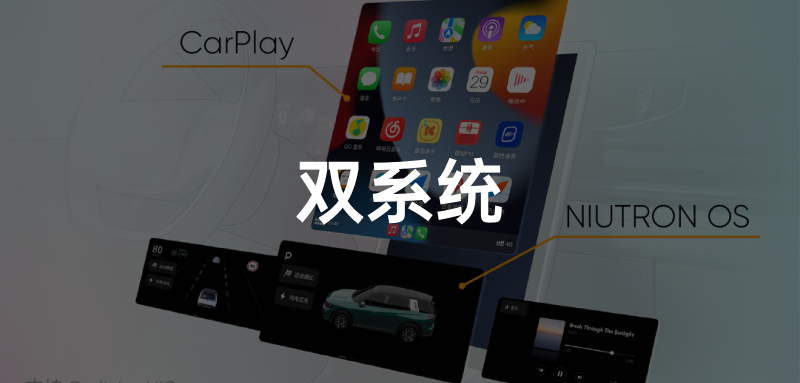On April 22nd, Ziyoujia released the latest information related to the NV cockpit. As the first product of the Ziyoujia brand, the NV also embodies the brand’s thinking on cockpit intelligence.
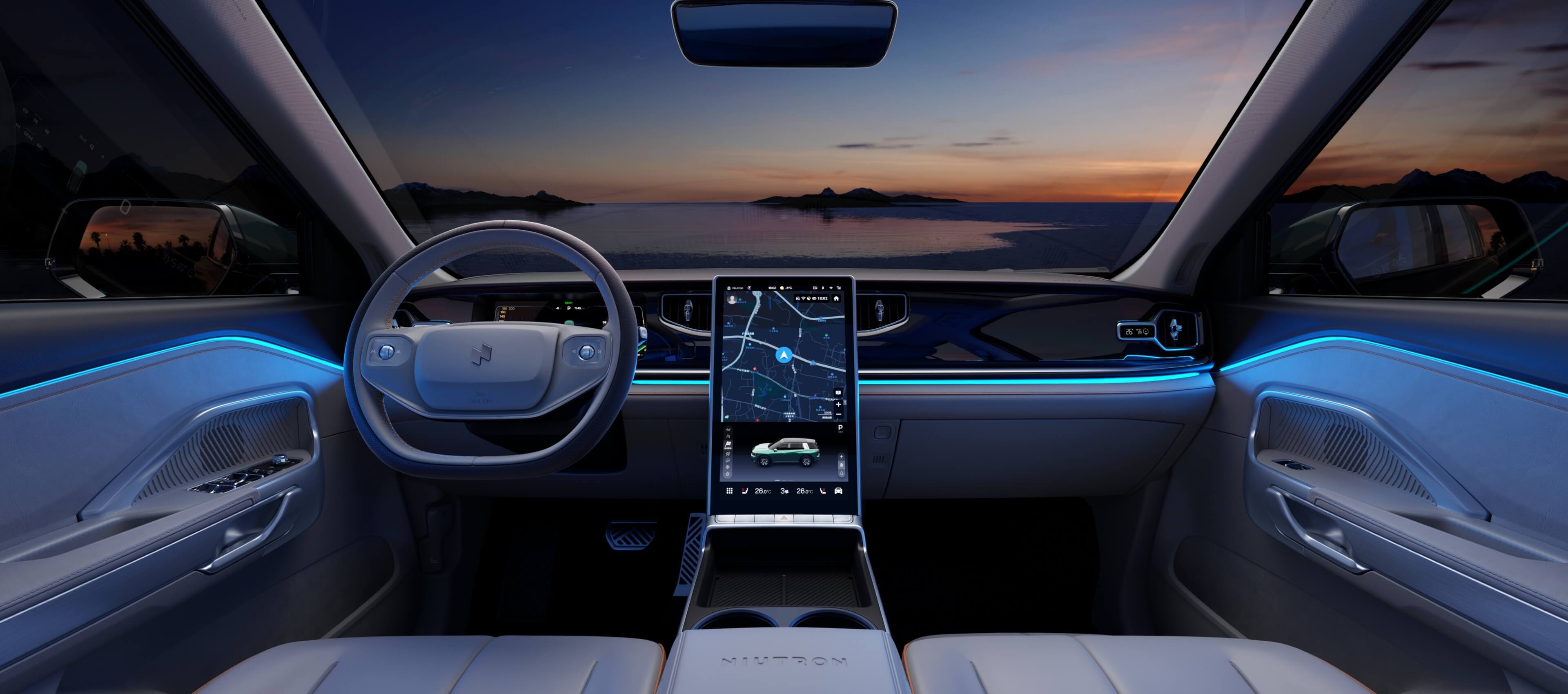
Let’s briefly review the cockpit configuration of Ziyoujia:
- 12.3-inch LCD instrument panel + 15.6-inch central control screen;
- AR live navigation;
- Apple Watch quick unlock function;
- Dual wireless charging with a power of up to 15W;
- Supports CarPlay, Carlink, and HiCar mobile connectivity.
From the picture, we can see that the central control screen of the Ziyoujia NV uses a vertically placed screen, which is divided into two parts. The upper part is used to display navigation, music, and other functions, while the lower part is used for vehicle control settings. There are also seven commonly used physical buttons at the bottom. To ensure operational convenience while driving, six linear motors are built into the bottom of the screen to provide touch feedback.
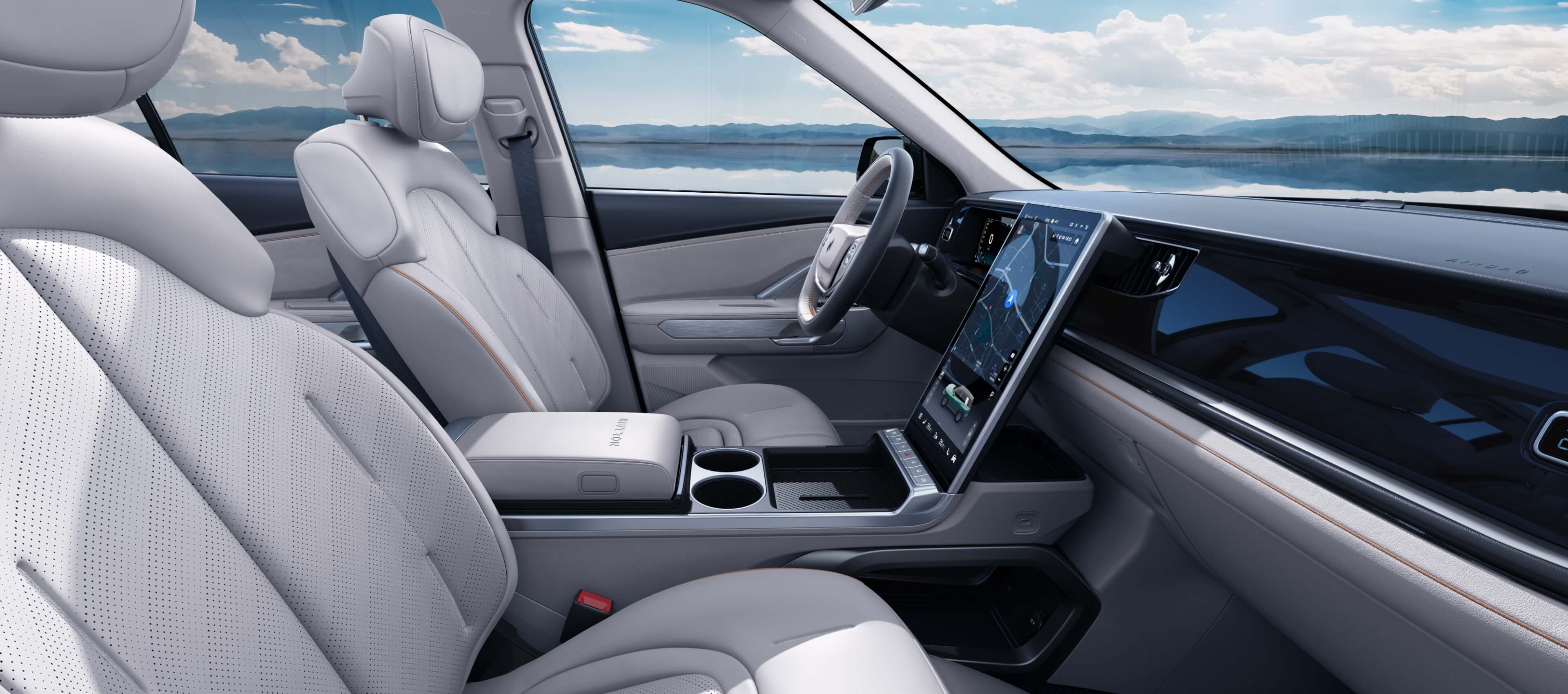
As we have not had the opportunity for actual experience, it is difficult to determine from the picture whether the system is easy to use or not. Therefore, the system itself is not the focus of this article. We will provide further interpretation after the test drive.
However, from the above configuration information, we can see one detail: Ziyoujia has put a lot of effort into “connectivity.” Not only has it integrated CarPlay, Carlink, and HiCar, but the system’s UI has also been optimized. It also supports iPhone widgets and can even be controlled by Apple Watch.
Today, we will discuss why Ziyoujia made this choice and what their intentions are in this trend of moving away from CarPlay.
More than just mobile connectivity
Ziyoujia has developed NIUTRON OS based on Android Automotive. The Smart Stacks module is a key feature of the system, as it allows NIUTRON OS and CarPlay to work on this 15.6-inch central control screen simultaneously through the module’s interactive functions.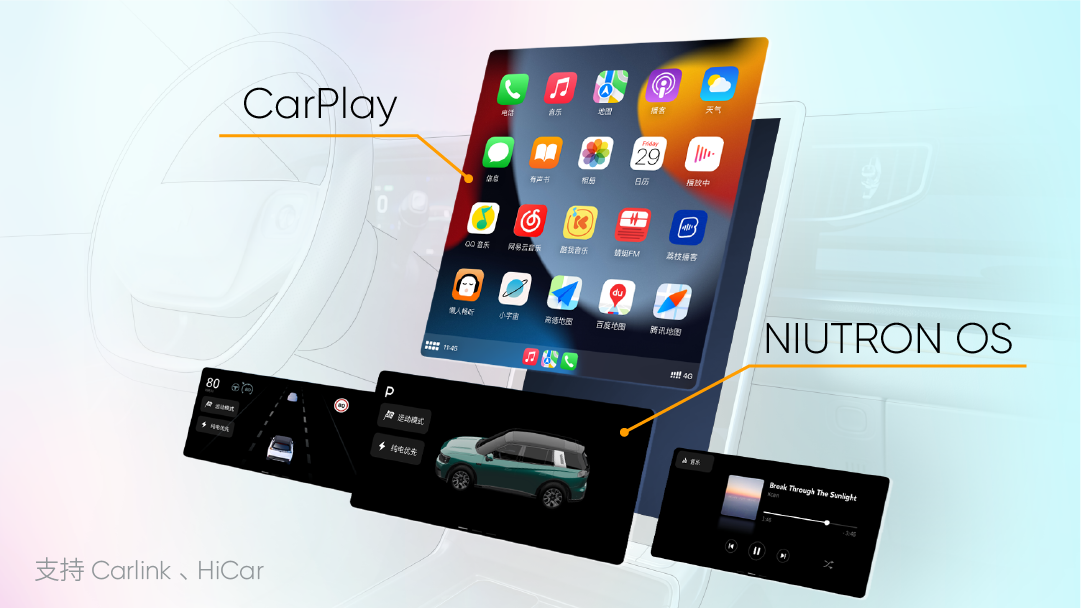
The frequently used navigation, music playback, and messaging can be accomplished by CarPlay on the top of the screen. On the bottom of the screen, users can operate the vehicle control functions, such as air conditioning, driving mode switching, and driving assistance, by NIUTRON OS.
This design can be said to solve a major pain point in the use of CarPlay. With the trend of large screens, physical buttons in cars are becoming less and less, and most functions are integrated into the large screen control. Therefore, the most taboo thing in UI design is to display commonly used functions in full-screen mode. However, many manufacturers did not consider this issue when integrating with CarPlay.
This means that in the CarPlay navigation state, vehicle settings cannot be adjusted. Once there is a need to adjust vehicle settings, the navigation interface must be temporarily abandoned.
We can also see on the all-new Mercedes-Benz C-Class that Mercedes-Benz has also done split-screen display for CarPlay and vehicle control, but unfortunately, the vehicle control can only adjust the air conditioning. Once it involves adjusting other functions, the problem mentioned above will be encountered.
_20220426152422.jpg)
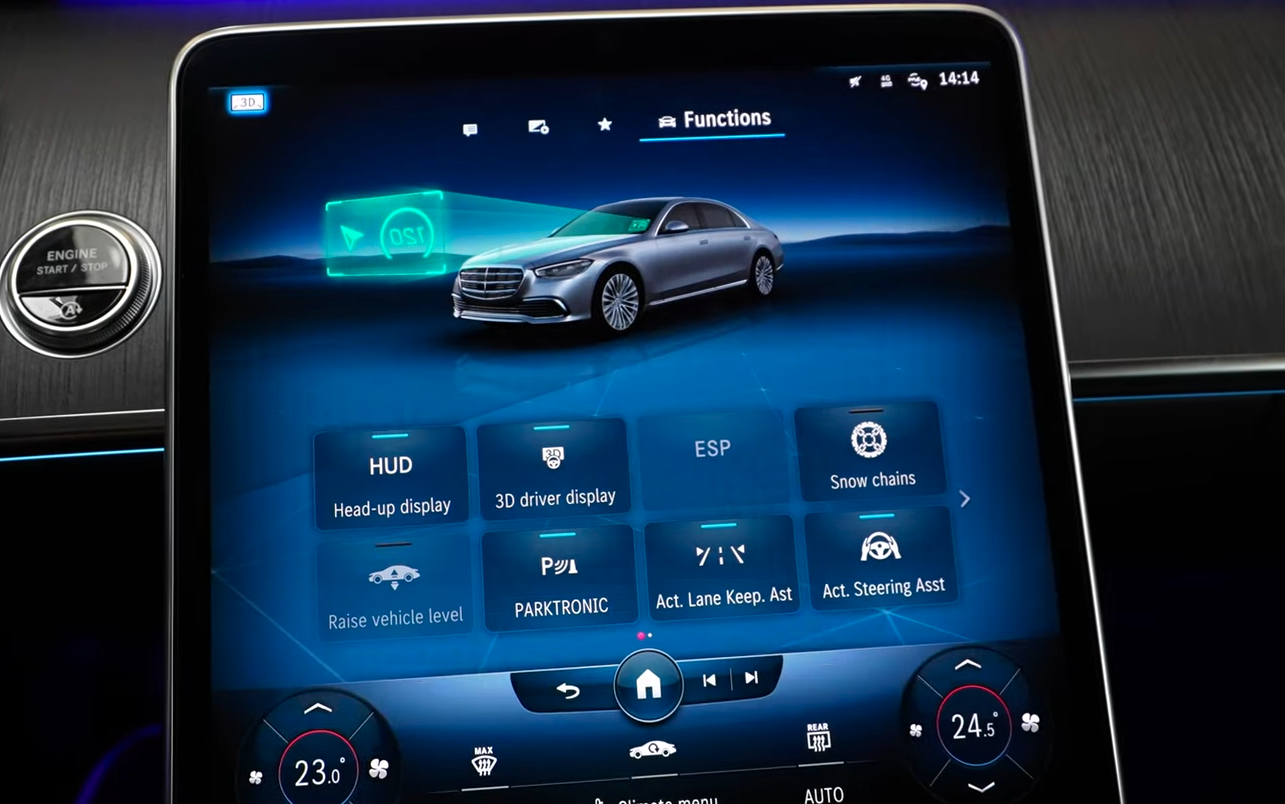
On the other hand, Sioeye has made targeted optimizations for this issue. Even if vehicle control operation is needed, it will not affect the use of CarPlay.
The second major pain point of CarPlay is that it does not support connection with the instrument cluster. When using the vehicle’s built-in navigation system, the navigation information will mostly be displayed on the instrument cluster or HUD, which improves the convenience of user information acquisition.But in models where the car machine and instrument are not connected, CarPlay can only be displayed on the central control screen alone. In order to address this issue, ZYHOME has made specialized optimizations, so on the ZYHOME NV, you can project CarPlay content onto the 12.3-inch LCD instrument panel for a better user experience.
Also, according to the official description from ZYHOME, the interactive logic of NIUTRON OS is relatively close to that of CarPlay, which reduces the learning cost for users during use. And users will not experience too much fragmentation due to differences in system UI. From this perspective, I also have higher expectations for the operating experience of NIUTRON OS itself.
Is swimming against the tide the right thing to do?
As we mentioned earlier, the new forces today are all “getting rid of CarPlay”, hoping to meet all user needs with their own car machines. This is what we hope to see, but the unavoidable problem with this approach is that there will be a very high learning cost.
I believe it is difficult for everyone who is used to Android to get used to iOS, and it is also difficult for those who are used to iOS to switch to Android. This is called “habit”. However, the “smart car machine” today can be described as a time when all flowers are blooming and all have different designs. Although you may see similar designs on some car machines, you can’t use all car machines according to the same logic.
This means that every car owner needs to have a certain learning ability and willingness to fully leverage the value of the car machine. I believe that many people may still discover some new features of the car machine 1-2 years after purchasing it. Taking an optimistic point of view, this is a pleasant surprise, but from another perspective, it means that you have been unable to fully leverage the value of the car machine.
Think back to which device you are most familiar with in your daily life?
Yes, it must be the one in your hand now – the phone.
According to the “2022 Mobile State Report” released by mobile data and analytics company App Annie, Chinese users use their phones for an average of 3.3 hours per day, ranking 17th globally. The global usage of mobile devices in 2021 was 38 trillion hours, reaching a new historical high.
I believe that for most people who have smartphones, they are already accustomed to the interaction logic in their phones. Even with different brands, the differences in interaction of each phone have become smaller and smaller in the era of full-screen displays. When people switch to a new brand of phone, they don’t need to spend too much time learning and adapting.
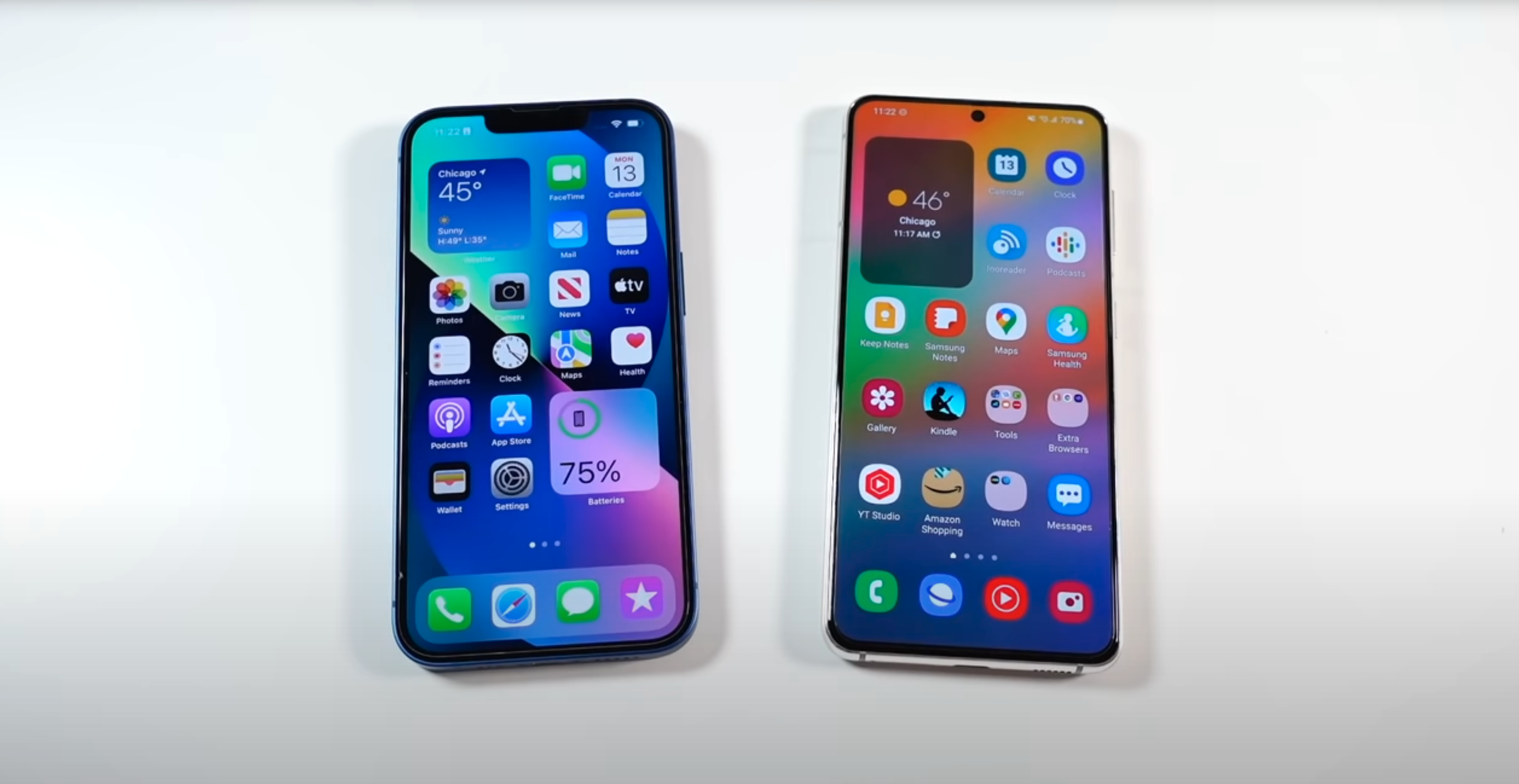
This is also why more and more car brands are moving their car machine logic closer to mobile phones.
And CarPlay, this kind of mobile phone interconnection system, is the operating system that is closest to the mobile phone UI in car machines.Simplicity in interface logic, Siri control, account synchronization, third-party car apps adapted to Apple’s standards, and customizable focus mode have all become reasons many users love CarPlay. Plus, CarPlay offers users more choices for third-party music and navigation apps.
It can be said that CarPlay has become the preferred in-car system for many users, and even some of my friends have a dedicated iPhone in the car just for CarPlay.
It’s easy to understand why ZYJ NV, while providing CarPlay, also optimized it and drew on its strengths.
Currently, everyone is very accustomed to the logic of operating phones, and phone manufacturers have provided very excellent connected solutions for in-car systems to ensure the user experience when driving, so that users can use them directly without changing their existing habits and all accounts can be continuously synchronized. This can meet the usage experience of most users.
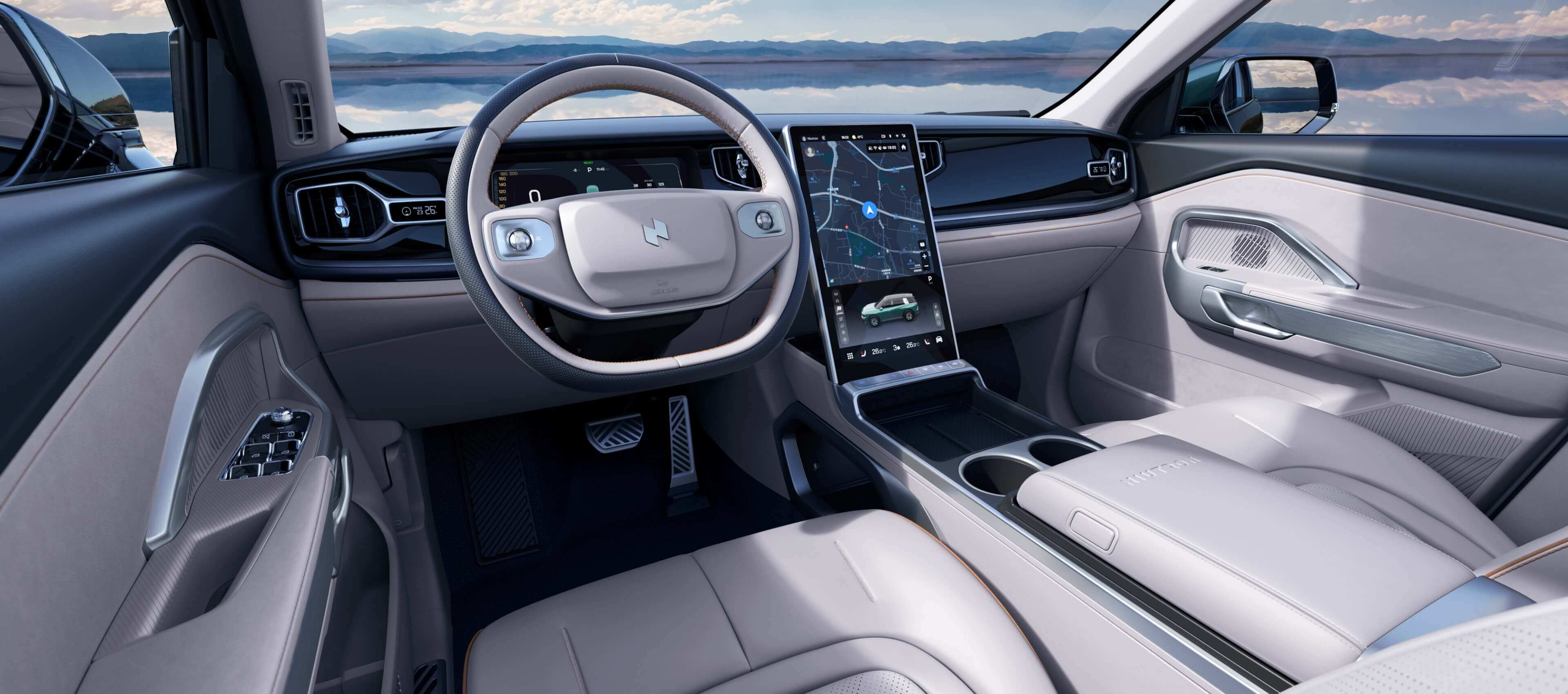
The second advantage of phone connectivity is smoothness.
Currently, the most advanced chip for car standards is the Snapdragon 8155, corresponding to the Snapdragon 855 on mobile phones, but the latest phones on the market have been equipped with 8Gen1 chips, which are 4 generations ahead.
However, the frequency of phone upgrades is around 2-3 years, while that of cars is up to 7-10 years, so the smoothness of the in-car system’s chipset is a problem that all car companies must face in the second half of the vehicle’s life cycle.
But as long as you use phone connectivity, the smoothness of your in-car system can be directly equivalent to that of your phone, as long as your phone is not lagging, the in-car system won’t lag.
Conclusion
At the beginning of this year, there were rumors that NIO was planning to establish its own phone brand, and Li Bin also said, “Nowadays, the phone is the most important device for connecting to cars. From the perspective of user interests and experience, we also need to study smartphones and in-vehicle smart terminals centered around cars.”
This line of thinking coincides with ZYJ NV, and in this era where phone connectivity is popular, ZYJ NV has differentiated itself in the new energy vehicle industry by using its Smart Stacks proprietary interactive building blocks.Although we hope that every car can have an extremely useful car multimedia system to meet all the needs during driving, it is inevitable that the learning cost of the system and the fluency problem caused by the unreplaceable chips exist.
Many car companies have cut off mobile phone connectivity functions such as CarPlay. The good thing is that it can force itself to continuously optimize the multimedia system experience, but it is also equivalent to blocking their own retreat.
From the perspective of user experience, perhaps having two options, such as the self-driving RV of the Leisure Travel Vans or the best solution of this era.
This article is a translation by ChatGPT of a Chinese report from 42HOW. If you have any questions about it, please email bd@42how.com.
